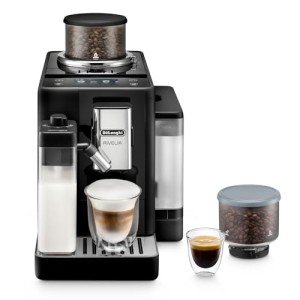
Budget Espresso Machine
Add a review FollowOverview
-
Founded Date April 7, 2017
-
Posted Jobs 0
-
Viewed 6
Company Description
15 Funny People Working Secretly In Bean-To-Cup Espresso Machine
The Ultimate Guide to Bean-To-Cup Espresso Machines
In an age where coffee culture has reached brand-new heights, the demand for exceptional home-brewed espresso is at an all-time high. Among the huge selection of coffee-making devices offered, bean-to-cup espresso machines are becoming significantly popular. These machines assure the wonderful experience of newly ground coffee beans transformed into an abundant espresso, all from the comfort of home. In this thorough guide, we will look into the intricacies of bean-to-cup espresso machines, exploring their benefits, essential functions, and offering a purchasing guide to assist you make an educated choice.
What is a Bean-To-Cup Espresso Machine?
A bean-to-cup espresso machine automates the whole coffee-making procedure. It grinds the coffee beans, brews the espresso, and typically froths the milk, all at the touch of a button. This smooth experience permits coffee enthusiasts to take pleasure in café-quality drinks from the convenience of their homes.
Why Choose a Bean-To-Cup Espresso Machine?
| Pros | Cons |
|---|---|
| Newly ground coffee | Generally more expensive |
| Automated procedure | Can use up counter space |
| Customizable settings | Requires routine cleansing |
| Wide variety of coffee types | Limited to machine capabilities |
| Typically consists of milk frothing |
Benefits of Bean-To-Cup Espresso Machines
- Freshness: The grinding process takes place prior to developing, which means that the coffee maintains its freshness and aromatic qualities.
- Benefit: With just the push of a button, coffee lovers can enjoy their preferred espresso without the need for a separate grinder or steam wand.
- Customization: Many models permit users to adjust various specifications, such as the grind size, water temperature level, and milk frothing consistency.
- Space-Saving: By combining several devices, bean-to-cup machines minimize clutter on the countertop.
Secret Features to Look For
When searching for a bean-to-cup espresso machine, it’s necessary to consider a few important features:
| Feature | Importance |
|---|---|
| Grind Settings | Identifies the consistency of the ground coffee. A wider variety enables more personalization. |
| Brewing Pressure | A higher pressure typically results in a much better extraction and richer espresso. Suitable pressure is around 9 bars. |
| Milk Frother | Necessary for cappuccinos and lattes. Pick between manual and Coffeee automatic frothing alternatives. |
| Easy Cleaning Mechanism | Look for machines with detachable components and automatic cleaning cycles for convenience. |
| Water Tank Capacity | Bigger tanks lower the frequency of refilling, suitable for regular use. |
| Interface | A digital screen or app connectivity can enhance user experience. |
Popular Bean-To-Cup Espresso Machines
Here are some popular models on the market today, highlighting their distinct features:
| Model | Grinder Type | Milk Frother | Pressure | Price Range |
|---|---|---|---|---|
| De’Longhi Dinamica | Cone-shaped | Automatic | 15 bars | ₤ 800 – ₤ 1,000 |
| Jura E8 | Ceramic | Automatic | 15 bars | ₤ 2,000 – ₤ 2,500 |
| Breville Oracle | Dual Boiler | Manual | 9 bars | ₤ 1,500 – ₤ 2,000 |
| Saeco Xelsis | Flat Burr | Automatic | 15 bars | ₤ 1,800 – ₤ 2,200 |
| Philips 3200 Series | Cylindrical | Manual | 15 bars | ₤ 600 – ₤ 800 |
How to Brew the Perfect Espresso
Using a bean-to-cup espresso machine might seem uncomplicated, but attaining the best espresso needs attention to detail. Follow these actions for a scrumptious cup:
- Select Quality Beans: Start with fresh, high-quality coffee beans to guarantee the best flavor.
- Adjust Grind Size: Depending on the type of coffee bean and your taste choice, experiment with the grind size for optimum extraction.
- Water Temperature: Water regularly around 195 ° F to 205 ° F is perfect for espresso brewing.
- Tamp the Coffee: If your machine permits, tamp the coffee uniformly to guarantee uniform extraction.
- Monitor Brew Time: Aim for an extraction time of 25 to 30 seconds for the ideal balance of flavors and crema.
Often Asked Questions (FAQs)
1. What is the distinction in between a bean-to-cup machine and a traditional espresso machine?
A bean-to-cup machine automates the grinding and brewing processes, while traditional espresso machines typically require manual intervention for grinding and tamping.
2. Are bean-to-cup machines simple to clean?
Most modern machines are created with ease of cleansing in mind, featuring detachable parts and automatic cleansing cycles. Nevertheless, regular upkeep is crucial for optimum efficiency.
3. Can I utilize pre-ground coffee in a bean-to-cup machine?
A lot of bean-to-cup machines are created particularly for whole beans. However, some models might have a bypass doser for using pre-ground coffee.
4. What kind of upkeep do bean-to-cup machines require?
Routine upkeep includes cleaning up the coffee premises container, water tank, and milk frother, in addition to descaling the machine every couple of months, depending upon the water hardness in your location.
5. For how long do bean-to-cup espresso machines last?
With proper care and maintenance, top quality bean-to-cup machines can last anywhere from 5 to 15 years.
A bean-to-cup espresso machine is a financial investment that can elevate your home coffee experience. Combining benefit and quality, these machines allow coffee lovers to craft scrumptious espressos without the requirement for multiple devices. By understanding the crucial features and following best practices, people can pick the best model customized to their requirements and choices. Whether you’re an experienced barista or a casual sipper, exploring the world of bean-to-cup espresso machines is sure to brew up a delightful experience.

